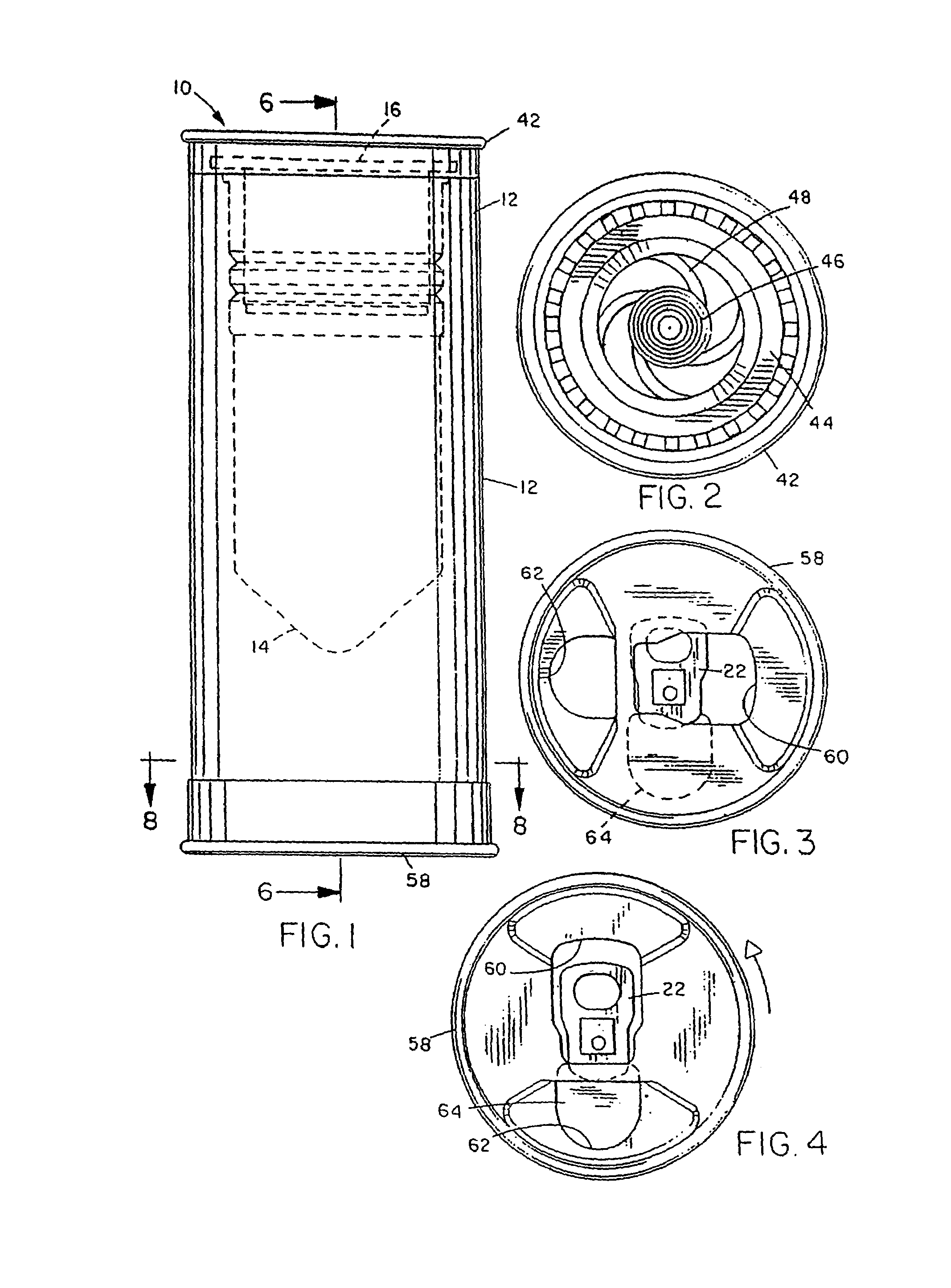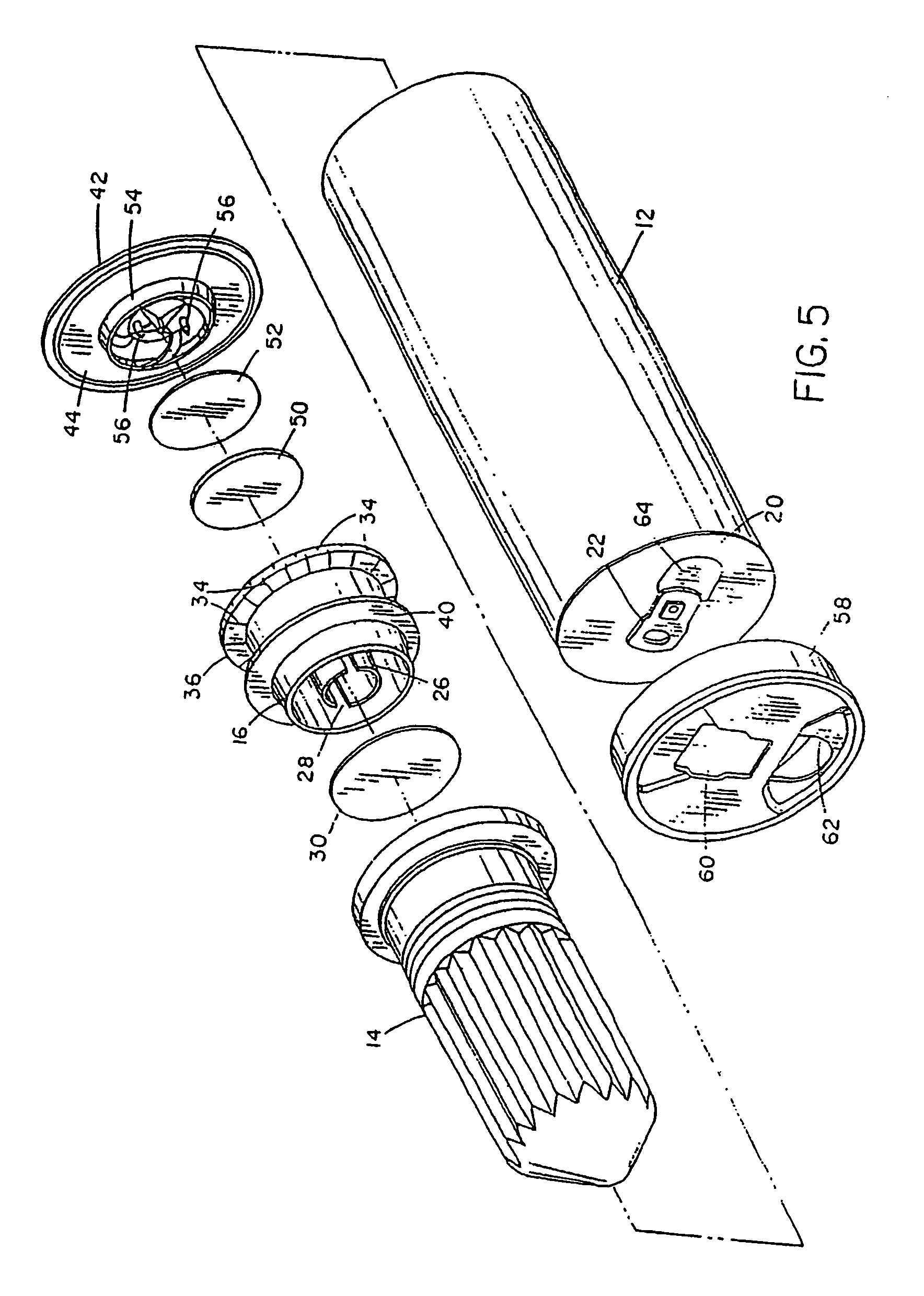Container with integral module for heating or cooling the contents
a technology of container and module, applied in the field of containers, can solve problems such as the consumption of container contents, and achieve the effect of relieving pressure and reducing pressure through apertures
- Summary
- Abstract
- Description
- Claims
- Application Information
AI Technical Summary
Benefits of technology
Problems solved by technology
Method used
Image
Examples
Embodiment Construction
[0046]As illustrated in FIGS. 1–8, a container 10 includes a container body 12, a thermic module body 14, and a thermic module cap 16. As best illustrated in FIGS. 5–7, module body 14 has an elongated heat-exchanger portion that extends into container body 16. The interior of this portion defines a reaction chamber in which the reaction occurs that heats (or, in alternative embodiments of the invention, cools) the beverage or other contents 18. The heat-exchanger portion has a corrugated or pleated wall to increase surface area and, as a result, heat transfer. Although in the illustrated embodiment the wall is corrugated or pleated, in other embodiments the wall may have other suitable geometries. Module cap 16 is press-fit in the open end of module body 14. An endcap 20 with a pop-tab closure 22 of the type commonly used in beverage cans is crimped over the other end of container body 12 in the manner of a conventional beverage can.
[0047]Module cap 16 is of unitary construction and...
PUM
 Login to View More
Login to View More Abstract
Description
Claims
Application Information
 Login to View More
Login to View More - R&D
- Intellectual Property
- Life Sciences
- Materials
- Tech Scout
- Unparalleled Data Quality
- Higher Quality Content
- 60% Fewer Hallucinations
Browse by: Latest US Patents, China's latest patents, Technical Efficacy Thesaurus, Application Domain, Technology Topic, Popular Technical Reports.
© 2025 PatSnap. All rights reserved.Legal|Privacy policy|Modern Slavery Act Transparency Statement|Sitemap|About US| Contact US: help@patsnap.com



